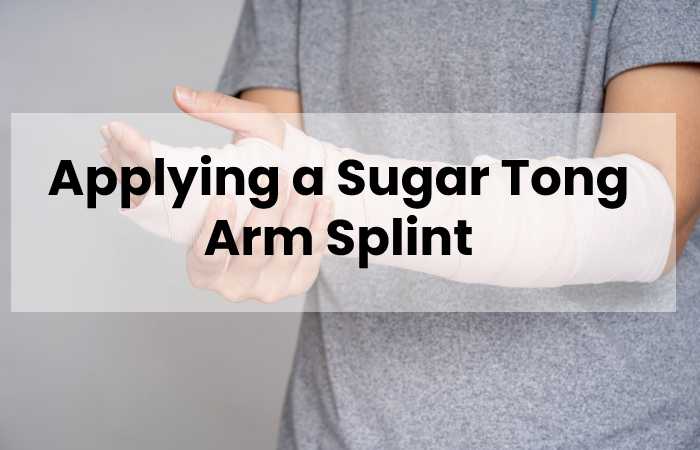Sugar Tong Splint
Splints remain used to keep wounded body parts from moving. Splints, unlike casts, are not circumferential and are slightly flexible. It can expand and accommodate swelling as a result of this. Splints are frequently used soon after an accident and then replaced with a more rigid cast.
Sugar-tong splints remain used to stabilise forearm and wrist injuries by restricting forearm rotation and wrist movement. After surgery, these splints can keep shattered bones aligned or safeguard a patient’s forearm or wrist.
Applying a Sugar Tong Arm Splint
Complications of Using a Sugar Tong Arm Splint
- Thermal harm (caused by the exothermic reaction between plaster or fibreglass and water)
- Excessive pressure resulting in skin ulcers or ischemic injury
- Excessive circumferential wrapping tightness may contribute to compartment syndrome.
Equipment
- Stockinette (enough to cover the area from metacarpophalangeal [MCP] joints to the mid-humerus)
- Padding for rolls (eg, cotton roll) width: 7.5 cm (3 inch)
- 5 to 10 cm plaster or fibreglass splinting material (3 to 4 inches) width—enough to extend from one side of the MCP joints around the elbow to the opposite side of the MCP joints
- Strong shears and scissors
- Elastic bandage, typically 7.5 to 10 cm in width (3 to 4 inch) width
- Warm water in a bucket or another container
- gloves that aren’t sterile
Positioning
- The patient should remain placed so the operator can easily access the afflicted hand.
- Splint the wrist at 10 to 20 degrees of extension.
- Splint the elbow at 90 degrees of flexion.
Procedure Step-by-Step Description
Although, Put on nonsterile gloves. Cover the region from the distal MCP joints to the mid-humerus with stockinette. Make a hole in the stockinette to allow the thumb to protrude.
Wrap the padding from the MCP joint to the mid-humerus, overlapping each turn by half the breadth of the padding and regularly tearing the wrapping across its width to reduce the danger of tissue compression. As needed, smooth the cushioning. Remove any surplus padding to avoid regions of increased pressure on the skin.
Although, Lay down a length of splint material that matches the distance from the MCP joints to the elbow and back to the MCP joints. Unroll more splint material, folding it back and forth along the original length until 8 to 10 layers are present (using single-layer rolls). Using pre-made splint material, cut a single piece to the above measurement.
Although, Soak the splinting material in warm water. Excess water should remain squeezed out of the splinting substance (do not wring out plaster). Apply the splint material from the MCP joints’ volar surface to the forearm’s volar surface around the elbow and then back to the volar surface of the MCP joints.
Aftercare
- Assure the patient that the splint is kept dry.
- Make arrangements for or propose suitable follow-up.
- Instruct the patient to watch for consequences such as increasing pain, paresthesias/numbness, and finger colour changes.
- Instruct the patient to seek further treatment if pain cannot remain managed at home with oral medications.
Conclusion
A sugar-tong forearm splint is a lengthy U-shaped splint that immobilises and restricts forearm rotation and wrist movement. a pair of tongs, generally silver, having claw-shaped or spoon-shaped ends used to serve lump sugar
